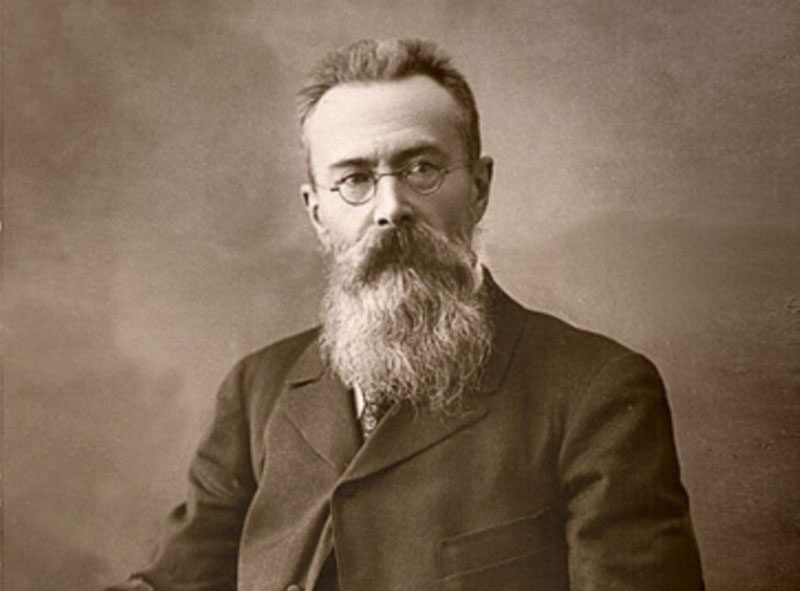Among the many masterpieces of Russian classical music, Sadko by Nikolai Rimsky-Korsakov stands as a vibrant testament to the composer’s imagination, his deep connection to Russian folklore, and his masterful orchestration. Composed originally as a tone poem and later developed into a full opera, Sadko represents one of Rimsky-Korsakov’s most innovative and enduring contributions to the Russian musical canon.
Origins and Inspiration
Sadko is rooted in an ancient Russian bylina—an epic narrative poem—about a legendary gusli player and merchant from Novgorod. According to the legend, Sadko wins the favor of the Sea King through his music and eventually journeys to the underwater realm, only to return to the human world with renewed wisdom. This folkloric theme captured the imagination of 19th-century Russian artists and was particularly appealing to Rimsky-Korsakov, a member of the nationalist group of composers known as The Mighty Handful or The Five.
In 1867, at the encouragement of fellow composer Mily Balakirev, Rimsky-Korsakov composed the original Sadko as a symphonic poem—a relatively new genre at the time. This early version, completed while he was still a young naval officer, was only his second orchestral work and showcased his emerging talent in musical storytelling.
Evolution into a Symphonic Poem
The 1867 version of Sadko was an important step in Rimsky-Korsakov’s development as a composer, but he was not satisfied with it. He revised the piece in 1869, and then again more significantly in 1892, shaping it into the mature symphonic poem that is most often performed today.
This final version is richly orchestrated and evokes the drama of the sea, the mystery of the underwater kingdom, and the emotional journey of Sadko himself. Through vivid tone painting and thematic transformation, Rimsky-Korsakov brings the legend to life, using flowing string passages to mimic the movement of waves and exotic harmonies to suggest the fantastical underwater world.
From Tone Poem to Opera
Rimsky-Korsakov’s fascination with Sadko did not end with the symphonic poem. Between 1894 and 1896, he expanded the story into a full opera, which premiered at the Mariinsky Theatre in 1898. The opera, also titled Sadko, became one of his most celebrated stage works and included many of the themes and orchestral ideas from the original tone poem.
The opera retained the magical and mythical atmosphere of the original story but added a cast of richly drawn characters, vocal ensembles, and dramatic scenes. It became a cornerstone of Russian opera and was admired for its colorful orchestration, lyrical melodies, and imaginative staging.
Musical Characteristics
The tone poem Sadko exemplifies Rimsky-Korsakov’s mastery of orchestration. The music moves from serene depictions of the sea to tempestuous and dramatic climaxes, reflecting the shifting fortunes of the protagonist. The piece features a series of episodes that portray different aspects of the legend, such as the hero’s musical duel and the splendor of the Sea King’s palace.
Among the most remarkable elements of the work is Rimsky-Korsakov’s ability to suggest narrative without words. Each musical section flows seamlessly into the next, creating a continuous sonic journey that mirrors the adventures of Sadko.
Legacy and Influence
Sadko helped establish Rimsky-Korsakov as a leading figure in Russian music. The tone poem in particular influenced later composers such as Igor Stravinsky and Sergei Rachmaninoff, who admired his orchestral technique and his ability to evoke fantasy and folklore through sound.
Today, Sadko remains a beloved piece in the orchestral repertoire, both as a tone poem and as an opera. Its blend of narrative richness, imaginative orchestration, and folkloric charm continues to captivate audiences around the world.
Conclusion
Nikolai Rimsky-Korsakov’s Sadko is more than just a musical composition—it is a bridge between the mythic past of Russia and the expressive possibilities of Romantic-era orchestral music. Whether encountered in the concert hall as a tone poem or on stage as an opera, Sadko showcases the composer’s unique gift for bringing ancient legends to life through the power of music.


Comments are closed